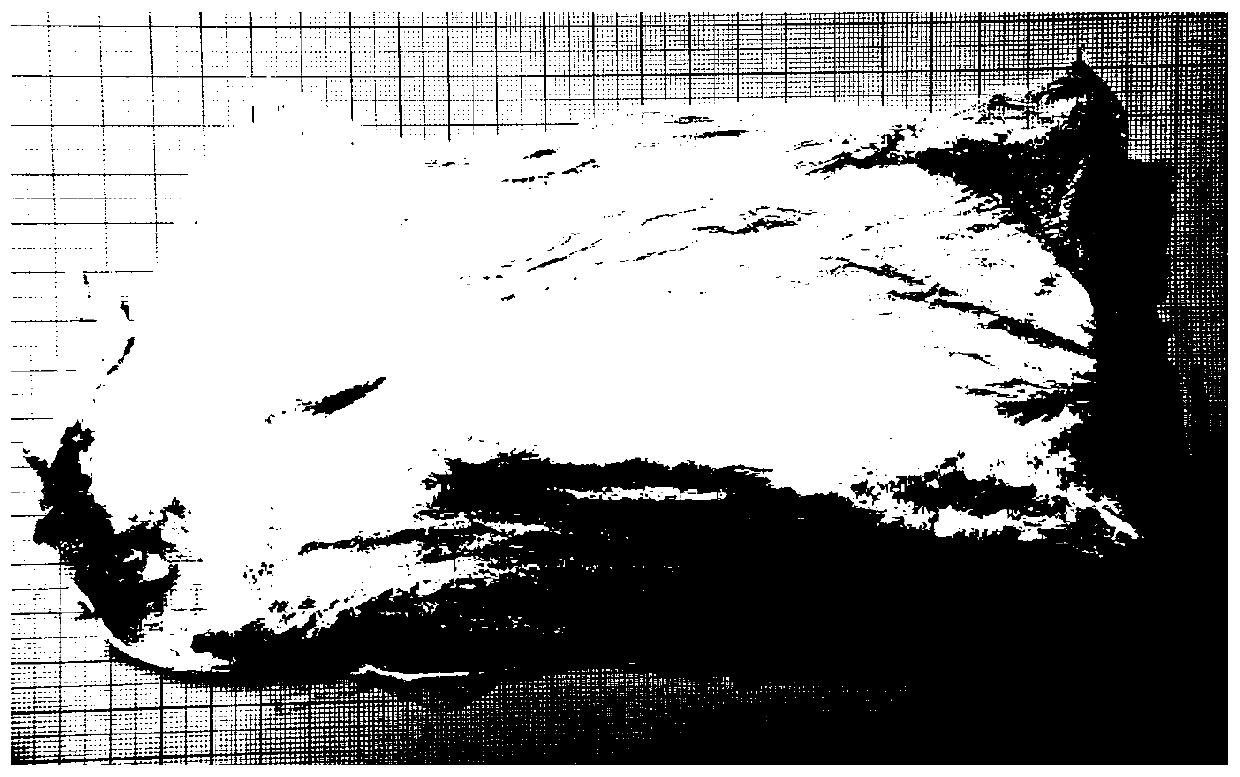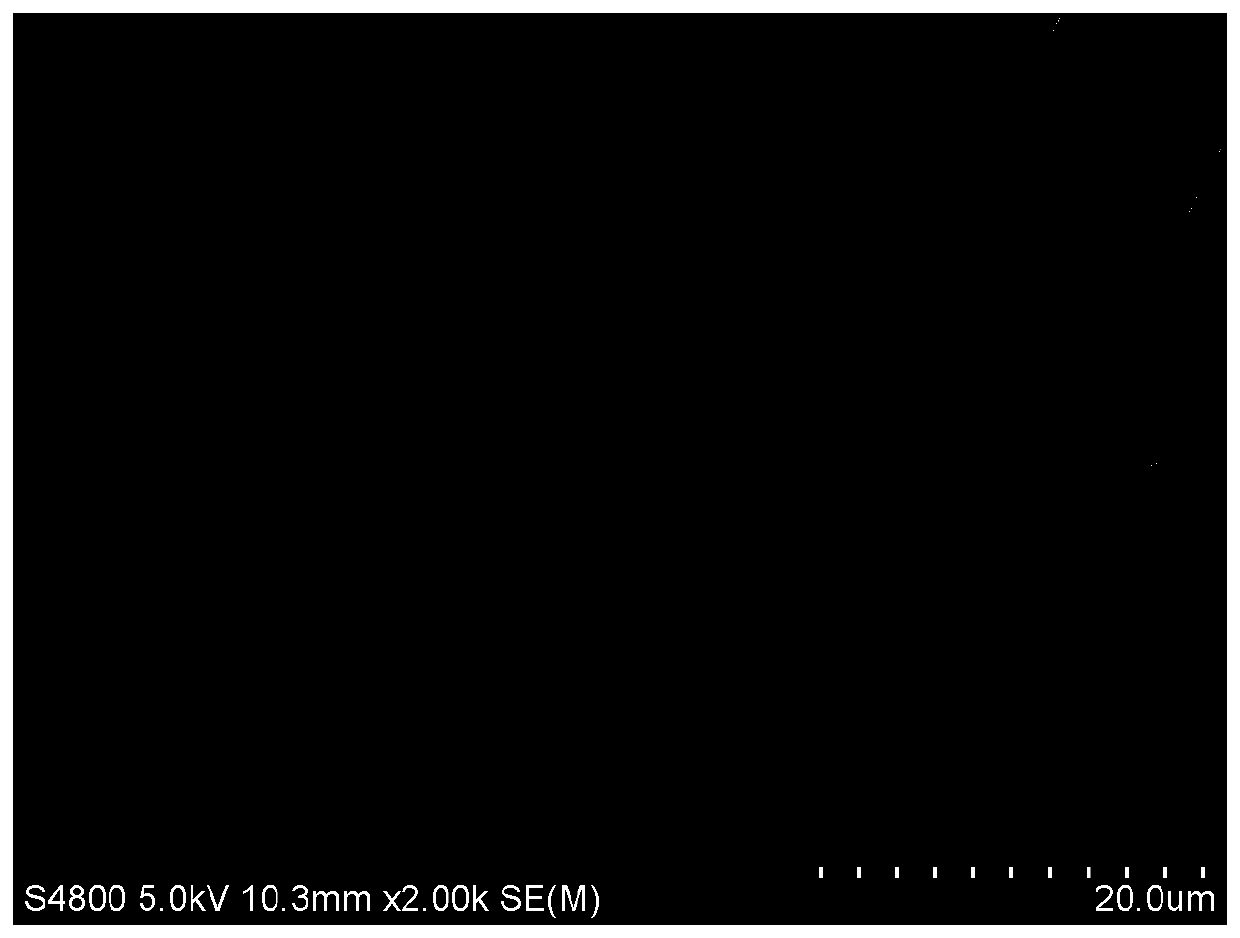A kind of preparation method of polyacetate titanium oxide precursor sol spinning solution and titanium oxide nanofiber photocatalyst
A technology of sol spinning solution and precursor fiber, which is applied in physical/chemical process catalysts, fiber chemical characteristics, chemical instruments and methods, etc. Crystallization, excellent mechanical properties, and the effect of reducing loss on ignition
- Summary
- Abstract
- Description
- Claims
- Application Information
AI Technical Summary
Problems solved by technology
Method used
Image
Examples
Embodiment 1
[0057] Embodiment 1: Preparation of titanium oxide nanofibers
[0058] (1) Preparation of poly(titania) acetate precursor
[0059] Weigh 100g of tetrabutyl titanate and 52.94g of glacial acetic acid, fully stir and react for 3 hours to obtain a golden yellow solution, that is, poly-titanyl acetate solution; place it in a flask, and concentrate under reduced pressure at a temperature of 65°C for 6 hours until obtaining The dry solid, namely the poly(titalyl acetate) precursor; the stability test of the obtained precursor: the sol formed by dissolving the just prepared poly(titalyl acetate) precursor powder in anhydrous methanol solvent can be placed continuously for more than 6 weeks, Still clear and transparent. The obtained precursor powder was placed for 4 weeks and then dissolved in anhydrous methanol solvent to form a sol, which could be placed continuously for more than 6 weeks and remained clear and transparent. It shows that the stability of the precursor is very good...
Embodiment 2
[0074] As described in Example 1, the difference is that 100g tetrabutyl titanate and 23.49g glacial acetic acid are weighed in step (1), fully stirred and reacted for 3h to obtain a golden yellow solution, i.e. poly-titanyl acetate solution; Concentrate under reduced pressure in a flask for 9 hours at a temperature of 65° C. to obtain a dry light yellow solid, which is the precursor of poly(titanate) titanyl acetate. The sol formed by dissolving the obtained precursor powder in an alcoholic solvent can be placed stably for 5 weeks.
Embodiment 3
[0076] As described in Example 1, the difference is that step (1) weighs 100g tetrabutyl titanate and 70.5g glacial acetic acid, fully stirs and reacts for 3 hours, and obtains a golden yellow solution, that is, polyoxytitanyl acetate solution; Place in a flask, concentrate under reduced pressure at a temperature of 65° C., and obtain a dry light yellow solid, which is a poly(titanate) acetate precursor. After the obtained precursor powder is placed for 4 weeks, the sol formed by dissolving it in an alcoholic solvent can be placed stably for 3 weeks, and precipitation will gradually begin to form after more than 3 weeks.
PUM
| Property | Measurement | Unit |
|---|---|---|
| diameter | aaaaa | aaaaa |
| diameter | aaaaa | aaaaa |
| length | aaaaa | aaaaa |
Abstract
Description
Claims
Application Information
 Login to View More
Login to View More - R&D
- Intellectual Property
- Life Sciences
- Materials
- Tech Scout
- Unparalleled Data Quality
- Higher Quality Content
- 60% Fewer Hallucinations
Browse by: Latest US Patents, China's latest patents, Technical Efficacy Thesaurus, Application Domain, Technology Topic, Popular Technical Reports.
© 2025 PatSnap. All rights reserved.Legal|Privacy policy|Modern Slavery Act Transparency Statement|Sitemap|About US| Contact US: help@patsnap.com



